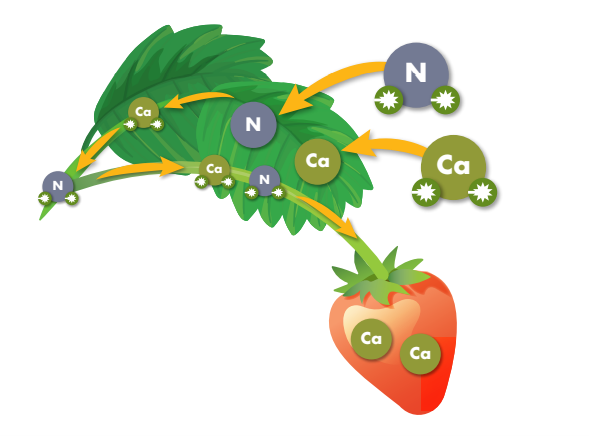Strawberries are one of the most valuable specialty crops in the world, but they’re also one of the most sensitive. While pests and diseases often take center stage when growers talk about yield loss, environmental factors like temperature, drought, and soil conditions can be just as damaging. In fact, many of the challenges that reduce fruit quality and yield in strawberries start with growing conditions that farmers can’t easily control.
Why Are Strawberries Particularly Susceptible to Environmental Conditions?
Strawberries are shallow-rooted and have relatively high water and nutrient demands compared to other crops. This makes them especially vulnerable to non-ideal growing conditions:
Yield Reductions
Even short periods of drought or excess heat can reduce flower initiation and fruit set, cutting into marketable yield.
Fruit Quality Issues
Periods of stress often lead to smaller, misshapen berries with lower sugar content, directly impacting consumer appeal and grower profits.
Increased Vulnerability
Plants weakened by stress are more susceptible to opportunistic diseases like Botrytis and Phytophthora. In a 2025 report, Michigan State University Extension found that strawberry plants facing abiotic stress are significantly more prone to disease such as black root rot, and yield losses stemming from this vulnerability can range from 20-40%.
What Growers Can Do
While no grower can control the weather, there are strategies to help strawberries handle environmental stress more effectively:
Irrigation management
Precision irrigation systems, soil moisture monitoring, and proper drainage reduce both drought and waterlogging risks.
Nutrient Management
Balanced fertilization and foliar feeding can support stressed plants and prevent deficiencies.
Crop Cover and Mulches
Row covers, shade nets, and mulching help buffer temperature fluctuations and conserve soil moisture.
Biostimulants
Tools like biostimulant seedling dips, foliar sprays, and soil-applied treatments can support pollination, improve root growth, and support tolerance to and recovery from stress events.
How BounceBack® Can Help
BounceBack® is a calcium and nitrogen product built with Transit® biostimulant and plant extracts, designed for high nutrient mobility and uptake within the plant. With organic acids from our Transit biostimulant and key nutrients, BounceBack improves berry firmness and quality, provides rapid relief for strawberries under photosynthetic and respiration stress, and increases shelf-life.
Improved Fruit Quality
Enhanced calcium mobility increases fruit firmness and extends shelf life.
Heat Stress Mitigation
BounceBack supports rapid relief from heat stress.
Optimized Formulation
BounceBack is designed for superior leaf penetration and enhanced nutrient mobility to drive results in the field.

In a strawberry trial in Rocky Point, North Carolina, on Camarosa strawberries, applications of BounceBack increased total strawberry yield by 8.3% over the untreated control (UTC) across four pick dates. BounceBack also resulted in an average 3.2% increase in Brix compared to the UTC.

